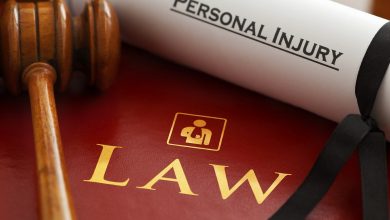All About Restraining Orders: Know Your Rights

Whether you’re getting a restraining order against someone or you’ve had one placed against you, restraining orders can be complicated business. Often associated with domestic violence, restraining orders can be a legal sort of protection for those who feel they are threatened by another individual. However, sometimes restraining orders are wrongfully filed for malicious reasons, and it may be necessary to attempt to have a restraining order lifted. Orders will likely be specific to each case when it comes to the distance required, places considered off limits, and who the order extends to, but there are some general rights allowed to those with a restraining order against them. Though it will vary by state, there are also general practices for obtaining, defending against, and lifting a restraining order, as well as the penalties that will come with violating one.
What Is a Restraining Order?
A restraining order, also referred to as a protective order, is a court ordered command to cease a certain behavior, generally involving contact with the individual who filed the restraining order. While the extent of the restraining order will vary case-by-case, a common reason would be a victim filing for a restraining order against an abuser. The judge would then order that the abuser keep a certain distance from the victim at all times, possibly requiring that they not enter any predetermined spaces of the victim – such as the workplace, home, or other places they frequent. It may also prohibit any form of contact, whether that be by phone, email, mail, social media, or any other method of communication.
There typically has to be a good reason to successfully obtain a restraining order, and some of these include:
- Domestic violence
- Elder or dependent adult abuse
- Juvenile abuse or harassment
- Sexual assault
- Civil harassment
- Workplace violence
Overall, there usually must be some sort of abuse, stalking, harassment, or assault occur or continuously occur, no matter by who. The provisions in a restraining order will likely include some of the following in order to protect the applicant against this behavior:
- Personal conduct orders: These are actions that will not be allowed by the defendant towards the protected individual, which include:
- Contacting in any form
- Attacking or other physical harm
- Sexual abuse
- Stalking
- Threatening
- Harassing
- Destroying the victim’s property
- Disturbing the victim’s peace
- Stay away orders: The restraining order will probably have either a certain distance the defendant must keep from the victim, even if they share it with the protected person, which could include the victim’s:
- Home
- Workplace
- School
- Children’s school or child care center
- Car
- Other frequented locations
- Move out orders: In the case of domestic restraining orders, the defendant could be ordered to move out of their home if they share it with the victim. Even for temporary restraining orders, they may be asked to leave with only their clothing and personal possessions until the hearing is held.
Other consequences could include not being able to see their children, own a gun, or have contact with the victim’s friends and family, as well as attending counseling or rehabilitation. Violating a protective order can come with serious consequences as well, even resulting in criminal charges with jail time, fines, and other penalties.

Types of Restraining Orders
Depending on who the victim is, the nature of the harassment and abuse, and the severity of the issue, it will be determined what type of restraining order will be taken out and for how long. The major types are:
Temporary Restraining Orders
Temporary restraining orders usually involve a serious situation where someone is in danger that can’t wait until a hearing with the defendant can be completed. However, that means that temporary restraining orders are not often allowed, as they come before the due process of a hearing and the recipient of the restraining order doesn’t even need to be informed. As such, it is required that:
- The victim prove through an affidavit – a sworn, written declaration of facts – or other verified complaint that they are in risk of “immediate and irreparable injury, loss, or damage” before the other party can testify
- The applicant’s attorney display how efforts were made to notify the other party of their intentions to file the protective order and why no further notification is needed
The temporary restraining order will only last for 14 days, after which the order will expire, be extended for another 14 days, or be extended for a period of time with consent from the recipient.
Emergency Protective Orders
In even bigger emergencies, an emergency protective order can be set into place. This can take place even quicker than a temporary restraining order, and while other restraining orders require the judge’s permission, police officers are able to grant emergency protective orders. This will usually happen when the police become involved in a domestic violence case where the victim needs immediate protection, but court is out of session for the time being. As such, these generally only last for 24 hours, the weekend, the holiday, or whatever time being until the court is able to again issue restraining orders.
This will also require proof that there is a genuine danger, although the proof typically doesn’t have to be quite as solid in this scenario. These are often issued as the result of a domestic violence dispute, and it can sometimes be difficult to correctly identify who is at fault in the situation, which is likely why they are so short term. The recipient of the restraining order will be able to plead their case at their hearing once court is back in session.
Permanent Restraining Order
Permanent restraining orders are obviously more long lasting than the others, ranging from weeks to indefinitely. They are taken much more seriously than the others, so they require that a hearing and trial have been completed, often coming along with the sentencing of a criminal trial to protect any victims. These orders can be modified as required, whether allowing for more or less contact, and they have the possibility of being renewed, extended, or even ended. It will require the process of lifting the restraining order with a judge, who will make a decision in the best interest of the applicant and any children or other dependents involved in the situation. They typically require these four points:
- “That the plaintiff has suffered an irreparable injury;
- That remedies available at law, such as monetary damages, are inadequate to compensate for the injury;
- That the remedy in equity is warranted upon consideration of the balance of hardships between the plaintiff and defendant; and
- That the permanent injunction being sought would not hurt public interest”
The types of permanent restraining orders can be categorized as such:
Domestic Violence Restraining Order
In cases where the victim suffers abuse from someone they live with, they can seek out a domestic violence restraining order. This would come as the result of a trial where the defendant was charged with domestic abuse, and could come with several provisions:
- No contact may be made with the victim in any form
- They may not harm, stalk, harass, disturb, or otherwise make physical contact with the victim
- They must refrain a certain distance from the victim at all times, which will likely require them to move out of the home they share with the victim
- Contact of any form cannot be made with the victim’s family members, possibly the defendant’s own children
- There may be a requirement that the abuser attend counseling or some other rehabilitative program
- The defendant may lose their right to gun ownership
Elder or Dependent Adult Abuse Restraining Order
Those who are older than 65 or over the age of 18 with certain debilitating mental or physical disabilities may file for a restraining order against their abuser. This abuse can be be financial or physical, whether that be through neglect, abandonment, or depravation of necessities. It’s important to note that others can file for a restraining order in the name of the victim, usually requiring a conservator, attorney-in-fact, guardian, or anyone else legally qualified to do so. This would likely include restrictions on the abuser, such as:
- A certain distance to refrain from the victim, which could require the defendant to not be allowed at their own place of employment or home
- No contact to be made with the victim
- Loss of gun rights
Juvenile Restraining Order
These restraining orders protect victims under the age of 18, whether it be from another minor or an adult. A parent, guardian, relative, caregiver, or social worker may file for a protective order in the minor’s behalf. These may be important in domestic violence cases where the children are being abused, whether living with the abuser or not, as well as to work against dating violence. As such, it will likely include provisions that the defendant may not:
- Have any form of contact with the victim
- Stalk, harass, disturb, or make other physical contact with the victim
- Come within a certain distance of the child, even requiring them to move out if necessary
- Own a gun
- Cease child support payments
Sexual Abuse Protective Order
In the case where someone has been sexually assaulted and fears for their safety from their abuser who they don’t cohabitate with, they can seek a restraining order. Sexual abuse includes any kind of touching of intimate or sexual parts without consent of the victim, including if they are not capable of consenting at the time. This may begin as a temporary restraining order and become permanent after a trial – or the defendant fails to request or attend a hearing. This can come with a five year restraining order, but it can become permanent if the abuser was convicted of at least sexual misconduct or rape in the third degree and whether the victim is reasonable to feel in danger. They will consider the relationship between the victim and abuser, as well as the defendant’s prior criminal history. They will likely not be allowed to:
- Contact the victim
- Intimidate, harass, molest, or otherwise physically come into contact with the victim
- Come into any contact with the victim’s family or friends
- Come into a certain distance of the victim
Civil Harassment Restraining Order
These orders are much more broad concerning who the abuser or victim can be and can include less violent behavior than the abuse described above, including any kind of assault, stalking, harassment, threatening behavior, or unwanted communication. However, the abuser cannot be a current or former spouse or partner, anyone the victim has previously dated, or a close relative, such as a parent, child, sibling, or grandparent. It will more often include a roommate (if it doesn’t qualify as domestic violence), neighbor, friend, stranger, family more than two degrees removed, or any other individual that the victim doesn’t have a close or vulnerable relationship with. Prohibited behavior can include:
- Continued harassment, stalking, threatening, or otherwise seriously annoying, offensive, or dangerous behavior
- Having any contact with the applicant
- Entering the applicant’s home, place of employment, or other places they frequent
Workplace Violence Protection Order
Employers may seek restraining orders for an employee who is experiencing violence or threats in the workplace. An employee wanting to file for a restraining order would likely apply for a civil harassment restraining order. This would require that the defendant not:
- Come into contact with the employee or their family
- Enter the employee’s workplace
- Have a gun

How to Get a Restraining Order
Those seeking a restraining order can do so at their local District Court, Probate & Family Court, or Superior Court. If the case involves ordering visitation or custody rights, that can only be done in the Probate & Family Court. They will first fill out a complaint, likely in the court’s clerk office, including an affidavit describing the abuse. They will then be taken to the courtroom where they will be sworn in and attend a hearing with the judge. After the victim describes the abuse and provides evidence, the judge will determine if a temporary restraining order may be granted until a hearing can be held with the defendant.
If it’s approved, the next hearing will be in around ten days. Here, the defendant will be able to tell their side, so it’s important to be prepared and bring as much proof of the abuse the victim has suffered as possible. Especially if children are involved, it’s smart to have testimony, whether in person or through a letter, of the victim’s character, the abuse they’ve suffered, and their mental fitness to make these claims – or keep custody of their children if applicable. Other pieces of evidence to back up the case can include:
- Police reports
- Medical records
- Photos of injuries
- Any recordings of or written abuse, threats, or admission of guilt
If the judge finds the defendant guilty, then a permanent restraining order may be instated, which can provide provisions specific to keeping the victim safe.
Outside of regular business hours, they should contact the police to obtain an emergency protective order, but they will probably have to attend a hearing the next day the courts are open.
What to Do If Someone Files for a Restraining Order Against You
If someone files a restraining order against you, you will be served notice through mail or the police. You will then have the chance to attend the hearing where you may present your case and any evidence that could help your case. But counter evidence of what was really happening will be particularly helpful to defend yourself. Do not destroy any evidence, however, as this could make you look more guilty. You may want to get an attorney, especially if custody of children will become an issue, and any character witnesses you may have.
What you shouldn’t do, however, is make any attempt to violate the restraining order, as violating a restraining order can result in criminal charges. If you are still allowed to have some communication with the protected person, do not overstep any boundaries. Any violation of the protective order could come with jail time, fines, loss of custody, a temporary order becoming permanent, and any other number of consequences.
If the restraining order does remain in place after the hearing, there may be a possibility of lifting the restraining order in the future. However, this is often on the condition that all required provisions were carried out, you’ve shown rehabilitation, and that a violation of the order didn’t occur. No matter what, restraining orders should be taken very seriously.



